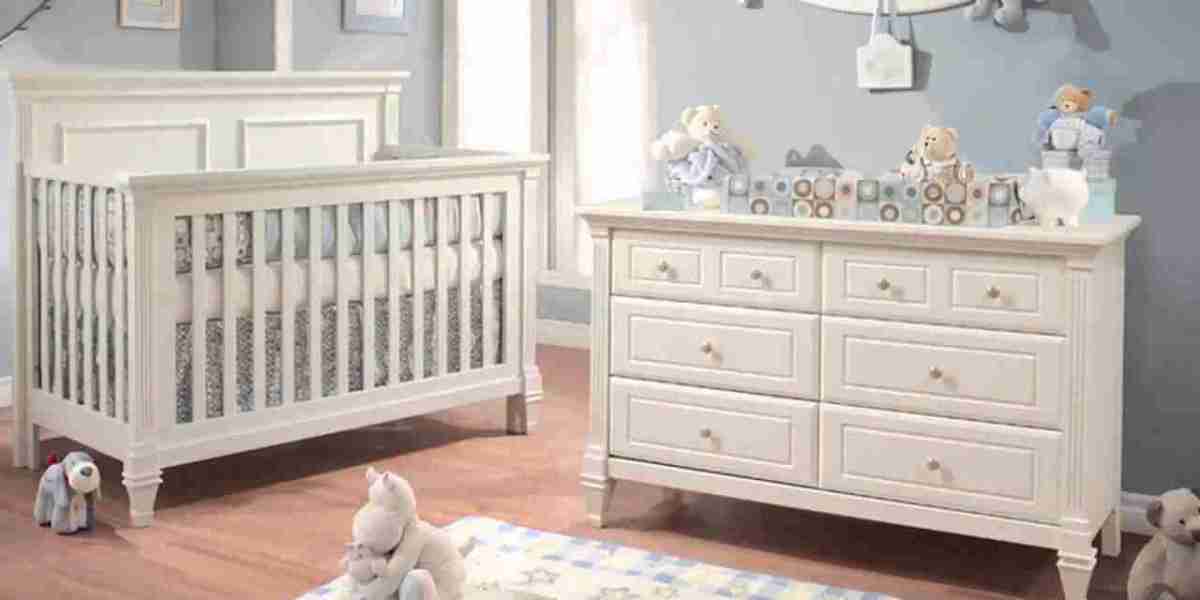Introduction
The nursery furniture market is experiencing a major shift, with increasing demand for both luxury and sustainable product lines. Modern parents are prioritizing high-quality, aesthetically pleasing, and eco-conscious nursery furniture, leading manufacturers to innovate and expand their offerings. This article explores the factors driving this trend, key developments in luxury and sustainable nursery furniture, and what the future holds for the industry.
The Growing Demand for Luxury Nursery Furniture
Luxury nursery furniture has gained significant traction among affluent consumers who seek premium designs, craftsmanship, and exclusive materials. Several factors contribute to the rise of this segment:
1. Premium Aesthetic Appeal
High-end nursery furniture brands are focusing on elegant, timeless designs that seamlessly blend with modern home decor.
Customization options, such as engraved detailing and exclusive fabric choices, are becoming more popular.
Luxury furniture collections often include matching accessories like chandeliers, designer rugs, and curated decor pieces.
2. High-Quality Materials and Craftsmanship
Luxury cribs and dressers are made from premium hardwoods such as oak, mahogany, and walnut.
Handcrafted details and superior finishes elevate the overall appeal of high-end nursery furniture.
Upholstered nursery chairs and bassinets feature designer fabrics, organic cotton, and high-thread-count linens for added sophistication.
3. Celebrity and Influencer Endorsements
Luxury nursery brands collaborate with celebrities and social media influencers to showcase their high-end collections.
Personalized nurseries designed by professional interior designers are trending, further fueling interest in luxury nursery furniture.
The Rise of Sustainable Nursery Furniture
Sustainability has become a key consideration for environmentally conscious parents. Brands are responding by incorporating eco-friendly materials and ethical production practices. Here’s how sustainable nursery furniture is evolving:
1. Use of Sustainable and Recycled Materials
FSC-Certified Wood: Manufacturers are sourcing wood from responsibly managed forests to ensure sustainability.
Bamboo Furniture: A rapidly renewable resource, bamboo is gaining popularity for its strength, durability, and environmental benefits.
Recycled Plastics and Metals: Some brands are incorporating recycled materials to minimize waste and reduce their carbon footprint.
2. Non-Toxic and VOC-Free Finishes
Many nursery furniture brands are adopting water-based, non-toxic paints and finishes to ensure safer indoor air quality.
Organic dyes and adhesives that do not contain harmful chemicals are increasingly being used.
3. Modular and Long-Lasting Designs
Convertible cribs that transition into toddler beds and full-size beds extend the lifespan of nursery furniture, reducing waste.
Multi-functional furniture, such as changing tables that convert into storage units, is gaining popularity for its long-term usability.
Rental and refurbishment programs allow parents to lease high-quality, sustainable furniture instead of buying new items.
Market Implications and Future Trends
The growing demand for luxury and sustainable nursery furniture is reshaping the market in several ways:
1. Expansion of Premium and Sustainable Brands
Established furniture brands are launching eco-friendly and luxury product lines to cater to evolving consumer preferences.
Niche brands focusing solely on sustainability or luxury are gaining traction in the market.
2. Integration of Smart and Sustainable Features
The combination of luxury and sustainability is leading to the development of smart nursery furniture with eco-friendly technology, such as energy-efficient nightlights and temperature-regulating mattresses.
AI-integrated baby monitors and smart cribs are being designed with sustainable materials, offering both functionality and environmental benefits.
3. Increased Consumer Willingness to Pay for Quality
Parents are showing a greater willingness to invest in high-quality, sustainable nursery furniture, viewing it as a long-term investment.
Customization options and ethical sourcing are becoming key differentiators in the purchasing decision.
Conclusion
The nursery furniture market is evolving rapidly, with a significant rise in both luxury and sustainable product lines. As consumers demand high-end aesthetics and environmentally responsible options, brands must innovate to balance luxury with sustainability. By embracing premium materials, ethical sourcing, and smart functionalities, nursery furniture manufacturers can cater to the next generation of eco-conscious, design-savvy parents.




